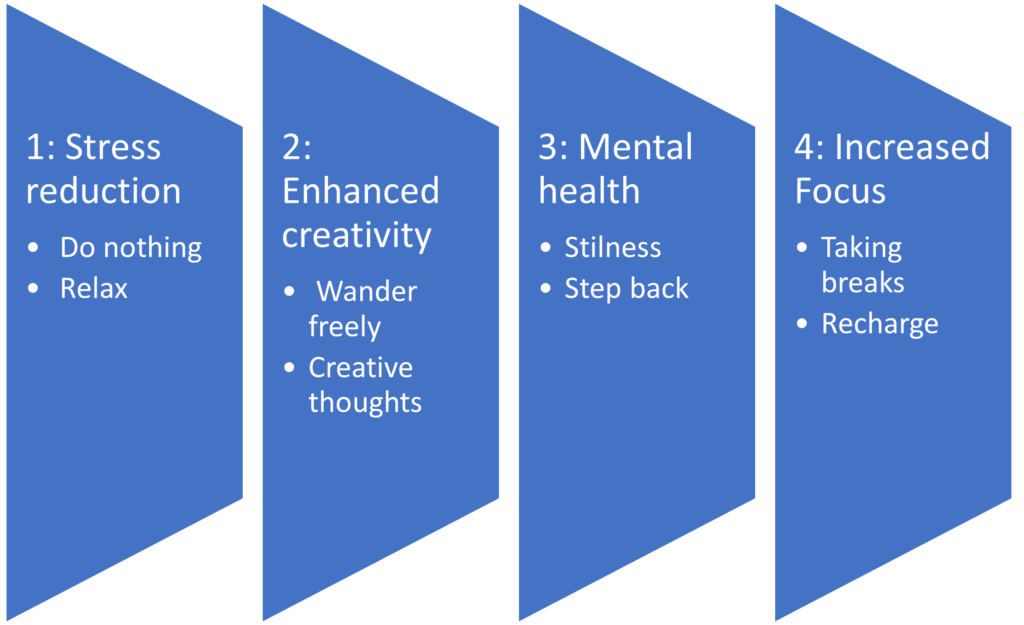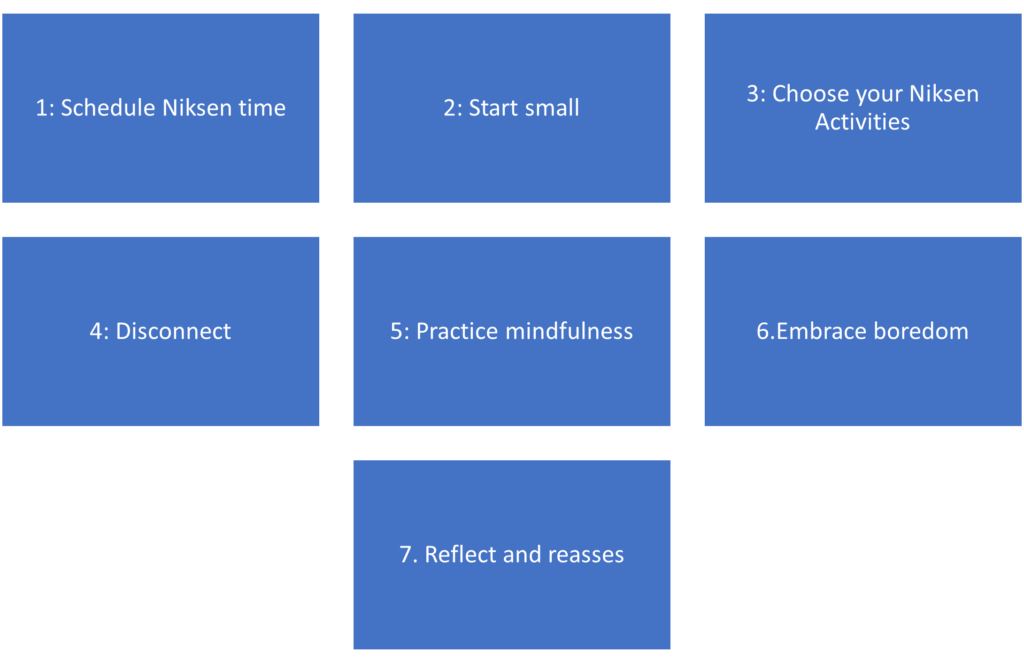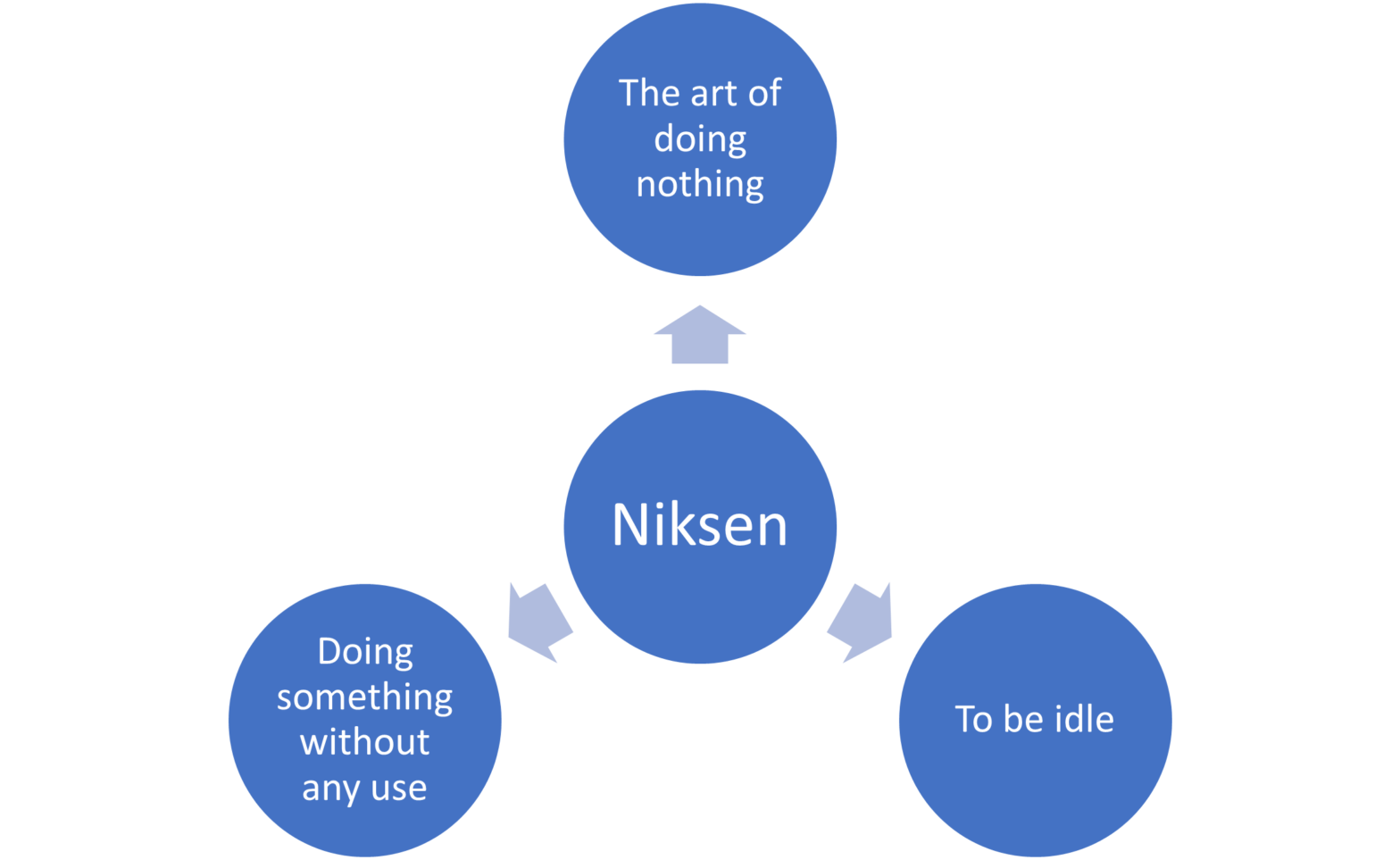Embracing Niksen: The Art of Doing Nothing
In a world that always praises productivity and being busy, the idea of doing nothing might seem strange, even lazy. But there’s a rising movement that argues for the significance of embracing idleness – it’s known as Niksen.
Originating from the Dutch word for “doing nothing,” Niksen is not about being lazy or unproductive; instead, it’s about intentionally setting aside time to simply be present and allow the mind to wander without any specific purpose. It’s a form of mindfulness that encourages relaxation, stress reduction, and creativity.
Niksen serves as a gentle reminder that our value isn’t determined by how busy we are. By embracing the art of doing nothing, we can cultivate a greater sense of peace, creativity, and fulfillment in our lives. So, why not take a moment to pause, breathe, and embrace the beauty of Niksen?
Benefits of ‘Niksen’
In a society where we’re bombarded with constant stimuli from technology and work demands, the idea of doing nothing can feel uncomfortable at first. But the benefits of Niksen are numerous and profound.

- Stress Reduction: Taking time to do nothing allows the body and mind to relax, reducing stress levels and promoting overall well-being. In a world where stress-related illnesses are on the rise, incorporating Niksen into our daily lives can be a powerful antidote.
- Enhanced Creativity: When we’re constantly busy, our minds don’t have the opportunity to wander freely. Niksen provides the space for creative thoughts and ideas to emerge naturally. Many renowned artists, writers, and thinkers credit moments of idleness for their most innovative breakthroughs.
- Improved Mental Health: In today’s fast-paced world, mental health issues like anxiety and depression are becoming increasingly common. Niksen offers a simple yet effective way to alleviate symptoms by allowing individuals to step back from the pressures of daily life and find solace in stillness.
- Increased Focus and Productivity: Contrary to what one might expect, taking breaks to do nothing can actually boost productivity. By giving our brains a chance to rest and recharge, we return to tasks with renewed focus and energy, leading to greater efficiency in our work.
So, how can you incorporate Niksen into your daily routine? It’s surprisingly simple:
- Schedule Time for Doing Nothing: Just as you would schedule a meeting or appointment, carve out dedicated time in your day for Niksen. Whether it’s a few minutes of quiet reflection in the morning or an hour of uninterrupted downtime in the evening, make it a priority.
- Disconnect: Turn off your phone, computer, and any other electronic devices that might distract you. Niksen is about being present in the moment, free from the constant barrage of notifications and alerts.
- Find a Comfortable Space: Whether it’s a cozy corner of your home, a peaceful park bench, or simply a comfortable chair, choose a space where you can relax and unwind without interruption.
- Let Go of Expectations: Don’t put pressure on yourself to achieve anything during your moments of Niksen. Allow yourself to simply be, without judgment or expectation.
Integrating ‘the art of doing nothing’ into your daily routine
Integrating the concept of Niksen, the art of doing nothing, into your daily routine can bring about numerous benefits, including reduced stress, enhanced creativity, and improved overall well-being.

Here are some practical steps to help you incorporate Niksen into your daily life:
- Schedule Niksen Time:
- Just as you would schedule any other activity or appointment, set aside specific time slots in your day dedicated to Niksen. Whether it’s a few minutes in the morning, a midday break, or an hour before bed, make it a priority to carve out time for doing nothing.
- Start Small:
- If the idea of doing nothing feels overwhelming or unfamiliar, start with small increments of Niksen time. Begin with just a few minutes each day and gradually increase the duration as you become more comfortable with the practice.
- Choose Your Niksen Activities:
- Niksen doesn’t have to involve sitting in silence and doing absolutely nothing (although it can if that’s what you prefer). It can encompass a wide range of activities that promote relaxation and mindfulness, such as taking a leisurely walk, enjoying a cup of tea without distractions, or simply gazing out the window and letting your mind wander.
- Disconnect:
- In today’s hyperconnected world, it’s easy to fill every spare moment with digital distractions. To fully embrace Niksen, disconnect from your electronic devices during your designated Niksen time. Turn off your phone, log out of social media, and create a space free from external stimuli.
- Practice Mindfulness:
- Use your Niksen time as an opportunity to practice mindfulness and present moment awareness. Focus on the sensations of your breath, the sounds around you, or the feeling of your feet on the ground. Allow yourself to fully immerse in the present moment without judgment or attachment.
- Embrace Boredom:
- In a culture that often equates boredom with laziness or unproductivity, it can be challenging to embrace moments of idleness. However, boredom can be a powerful catalyst for creativity and self-discovery. Instead of immediately reaching for your phone or seeking out distractions, allow yourself to sit with boredom and see where it leads you.
- Reflect and Reassess:
- Regularly reflect on how integrating Niksen into your daily routine is impacting your overall well-being. Notice any changes in your stress levels, mood, creativity, and productivity. Adjust your approach as needed to ensure that Niksen remains a sustainable and beneficial practice for you.
By intentionally incorporating moments of Niksen into your daily routine, you can cultivate a greater sense of peace, presence, and fulfillment in your life. Experiment with different techniques and approaches to find what works best for you, and don’t be afraid to make adjustments along the way. Remember that the art of doing nothing is not about being lazy or unproductive but about creating space for rest, relaxation, and self-care in a busy world.
Simple exercises to learn the art of doing nothing
Becoming skilled at Niksen, the art of doing nothing, involves training your mind to embrace stillness and relaxation. Here are five simple exercises to help you cultivate this skill:
- Breath Awareness Meditation:
- Find a quiet and comfortable place to sit or lie down.
- Close your eyes and take a few deep breaths to center yourself.
- Shift your attention to your breath. Notice the sensation of air entering and leaving your nostrils or the rise and fall of your chest.
- Whenever your mind starts to wander, gently bring your focus back to your breath without judgment.
- Practice this for 5-10 minutes daily, gradually increasing the duration as you become more comfortable.
- Mindful Observation:
- Take a walk outside in nature or sit by a window with a view.
- Choose an object to focus on, such as a tree, a flower, or a passing cloud.
- Observe the object mindfully, noticing its colors, textures, and movements.
- Resist the urge to analyze or label what you see; simply observe with curiosity and acceptance.
- Allow yourself to become fully absorbed in the present moment, appreciating the beauty of your surroundings.
- Body Scan Relaxation:
- Lie down in a comfortable position, such as on a yoga mat or your bed.
- Close your eyes and take a few deep breaths to relax your body.
- Begin at your feet and slowly scan your body from head to toe, noticing any areas of tension or discomfort.
- As you identify areas of tension, consciously release the tension with each exhale, allowing your muscles to soften and relax.
- Continue this practice, moving gradually up your body, until you reach the top of your head.
- Unstructured Downtime:
- Set aside 10-15 minutes of unstructured downtime each day.
- Find a comfortable spot to sit or lie down, free from distractions.
- Allow yourself to do absolutely nothing during this time. Resist the temptation to check your phone or engage in any activities.
- Simply sit or lie quietly, letting your mind wander wherever it pleases.
- Embrace the stillness and allow yourself to be fully present in the moment, without any agenda or goals.
- Gratitude Reflection:
- Take a few moments each day to reflect on three things you’re grateful for.
- Sit quietly and close your eyes, bringing to mind specific people, experiences, or blessings that you appreciate.
- Allow yourself to savor the feelings of gratitude that arise, noticing how they bring a sense of warmth and contentment to your heart.
- Practice this daily to cultivate a mindset of appreciation and abundance, which can help counteract feelings of stress and negativity.
These exercises are designed to help you develop greater mindfulness, relaxation, and presence in your daily life. With regular practice, you’ll become more skilled at embracing the art of Niksen and enjoying the simple pleasures of doing nothing.
